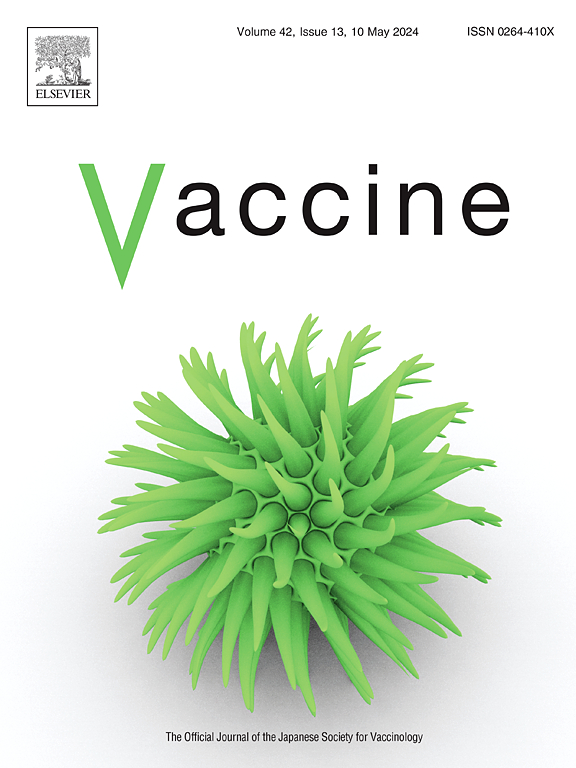Long-term effectiveness of live zoster vaccine against herpes zoster and related complications: a nationwide emulated target trial in South Korea
IF 4.5
3区 医学
Q2 IMMUNOLOGY
引用次数: 0
Abstract
Background
The live attenuated zoster vaccine is used to prevent herpes zoster in older individuals, but evidence on its durability remains limited, particularly across diverse populations and healthcare systems. We therefore assessed the long-term vaccine effectiveness of live attenuated zoster vaccine against herpes zoster and its complications in a nationally representative cohort of older individuals in South Korea.
Methods
We emulated target trial from a large-scale, population-based nationwide cohort of individuals aged ≥50 years in South Korea (n = 2,519,582), integrating health insurance data (Korea Health Insurance Review and Assessment Service), national health screening (Korean National Health Insurance Service), and live attenuated zoster vaccination data (Korea Disease Control and Prevention Agency). Exposure was defined as receiving the live attenuated zoster vaccine between January 1, 2012, and December 31, 2021, with a follow-up period through January 31, 2024. Outcomes included incident herpes zoster, postherpetic neuralgia, herpes zoster encephalitis, and hospital admission for herpes zoster. The effectiveness and durability were estimated using adjusted hazard ratios (aHRs) with 95 % confidence intervals (CIs) from Cox proportional hazard models and restricted mean survival time (RMST) up to 10 years in an overlap-weighted cohort.
Results
Among 910,602 individuals (mean age, 61.48 [SD, 2.53] years; 47.30 % males) after overlap weighting, vaccination was associated with significantly lower risks of herpes zoster (aHR, 0.48 [95 % CI 0.48–0.49]; RMST differences, 151.1 days), postherpetic neuralgia (0.47 [0.46–0.48]; 86.0 days), herpes zoster encephalitis (0.40 [0.25–0.63]; 0.20 days), and hospital admission for herpes zoster (0.33 [0.31–0.35]; 14.1 days). Although effectiveness declined, protection remained significant for up to 8 years. Similar waning patterns were observed for postherpetic neuralgia and hospital admissions. Greater effectiveness was observed in males, individuals aged <60 years, and those who consumed alcohol less than once per week.
Conclusion
Live attenuated zoster vaccination was associated with substantially reduced risks of herpes zoster and its complications in South Korea. Despite waning, protection persisted for 8 years, supporting the continued role of live attenuated zoster vaccine, particularly where recombinant vaccines are limited.
预防带状疱疹及相关并发症的带状疱疹活疫苗的长期有效性:韩国一项全国性的模拟靶试验
背景:带状疱疹减毒活疫苗用于预防老年人的带状疱疹,但关于其持久性的证据仍然有限,特别是在不同的人群和卫生保健系统中。因此,我们在韩国一个具有全国代表性的老年人队列中评估了带状疱疹减毒活疫苗对带状疱疹及其并发症的长期疫苗有效性。方法:我们模拟了韩国年龄≥50岁的大规模、以人群为基础的全国队列(n = 2,519,582)的目标试验,整合了健康保险数据(韩国健康保险审查和评估服务中心)、国民健康筛查(韩国国民健康保险服务中心)和减毒带状疱疹疫苗接种数据(韩国疾病控制和预防机构)。暴露定义为在2012年1月1日至2021年12月31日期间接种减毒带状疱疹活疫苗,随访期至2024年1月31日。结果包括带状疱疹事件、带状疱疹后神经痛、带状疱疹脑炎和因带状疱疹住院。在重叠加权队列中,使用Cox比例风险模型的校正风险比(aHRs)(95%置信区间(ci))和限制平均生存时间(RMST)(最长10年)来估计有效性和持久性。结果:在重叠加权后的910,602例(平均年龄61.48 [SD, 2.53]岁,47.30%为男性)中,接种疫苗与带状疱疹(aHR, 0.48 [95% CI 0.48-0.49]; RMST差异,151.1天)、带状疱疹后神经痛(0.47[0.46-0.48];86.0天)、带状疱疹脑炎(0.40[0.25-0.63];0.20天)、带状疱疹住院(0.33[0.31-0.35];14.1天)的风险显著降低相关。虽然有效性下降,但保护作用在长达8年的时间里仍然很重要。在带状疱疹后神经痛和住院患者中观察到类似的减弱模式。结论:在韩国,减毒带状疱疹活疫苗与带状疱疹及其并发症的风险显著降低相关。尽管减弱,但保护作用持续了8年,支持减毒带状疱疹活疫苗继续发挥作用,特别是在重组疫苗有限的情况下。
本文章由计算机程序翻译,如有差异,请以英文原文为准。
求助全文
约1分钟内获得全文
求助全文
来源期刊

Vaccine
医学-免疫学
CiteScore
8.70
自引率
5.50%
发文量
992
审稿时长
131 days
期刊介绍:
Vaccine is unique in publishing the highest quality science across all disciplines relevant to the field of vaccinology - all original article submissions across basic and clinical research, vaccine manufacturing, history, public policy, behavioral science and ethics, social sciences, safety, and many other related areas are welcomed. The submission categories as given in the Guide for Authors indicate where we receive the most papers. Papers outside these major areas are also welcome and authors are encouraged to contact us with specific questions.
 求助内容:
求助内容: 应助结果提醒方式:
应助结果提醒方式:


